Garden Maintenance Barbican: Nurturing Your Urban Oasis
Introduction to Garden Maintenance in Barbican
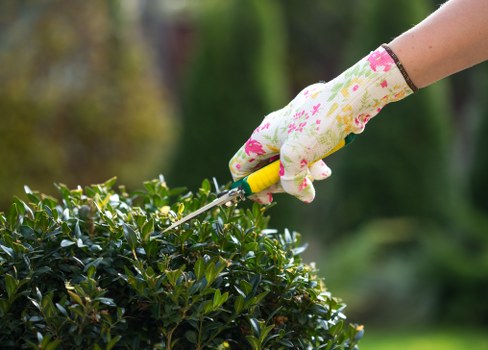
The heart of Barbican beats with a unique charm that combines modern urban living with calm green spaces. Garden Maintenance Barbican is about more than simple upkeep—it is the careful art of nurturing a living space that reflects both nature and community aesthetics. In an area where historic architecture meets modern design, maintaining vibrant gardens is essential to creating a soothing retreat from the hustle and bustle of city life.
Local residents have long understood that a well-kept garden can reduce stress, boost community spirit, and even add to property values. Investing time in garden care is an act of commitment that brings lasting beauty and tangible rewards. With the right techniques and a love for nature, anyone can transform a small patch of soil into an urban sanctuary.
Gardens in Barbican serve as an extension of personal living space. They are places where families gather for dinner, neighbors share stories, and children play freely. Whether your garden is a cozy urban plot or a more expansive green retreat, understanding the basics of garden maintenance is an important step towards creating a landscape that both soothes the eyes and nurtures the soul.
Understanding the Local Climate and Its Impact on Your Garden
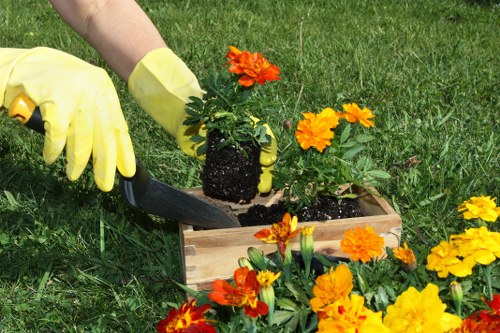
Barbican experiences a temperate climate that challenges gardeners with both rainy spells and periods of intense sunshine. This fluctuation demands a flexible garden maintenance schedule to protect delicate plants and ensure robust growth. Timely watering, mulching, and the careful selection of native species are essential strategies for a flourishing garden.
It is crucial to note that watering routines need to be adjusted seasonally. In colder months, overwatering can lead to mold and unwanted pests, while during summer, a well-irrigated garden stands out as a refreshing oasis. Garden maintenance Barbican practices must evolve with the weather. Planning ahead for seasonal changes ensures that your green space remains vibrant throughout the year, even when faced with unexpected weather challenges.
Moreover, gardeners in Barbican benefit from understanding the natural soil composition. Soil health plays a significant role in determining which plants will flourish. Local organic matter, proper pH levels, and nutrient-rich fertilizers can dramatically improve plant vitality. By tailoring your approach to these natural conditions, you establish a solid foundation for long-lasting garden success.
Essential Garden Maintenance Tips for Barbican Homeowners
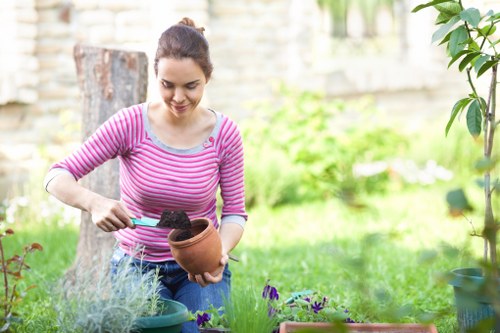
For homeowners keen on maintaining a thriving garden in Barbican, a few basic tips can make all the difference. Regular pruning, weeding, and seasonal soil amendments keep the garden in prime condition. Starting with early morning or late afternoon tasks helps avoid the midday heat, preserving both energy and the garden's delicate ecosystem.
Tip 1: Invest in quality garden tools. Tools like a sturdy spade, sharp pruners, and a reliable hose with adjustable pressure can save hours of work. Be sure to clean and oil your tools regularly to ensure longevity. A well-maintained tool kit reflects the care you put into your garden, making everyday tasks easier and more enjoyable.
Tip 2: Plan your garden's layout with seasonal blooms in mind. A diverse mix of perennials, annuals, and even native herbs can provide color and texture all year. Garden maintenance Barbican involves understanding the interplay of light, water, and soil nutrients to maximize growth potential and ensure that each plant contributes to the overall harmony of your outdoor space.
Garden Maintenance Tools, Techniques, and Seasonal Care
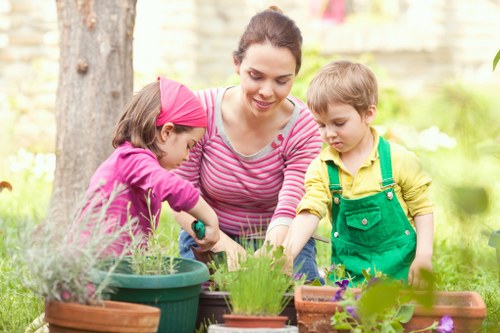
Choosing the right tools and techniques is crucial for successful garden care in Barbican. Residents often rely on well-known practices passed down through generations, combined with modern innovations that enhance efficiency. Basic tools such as rakes, spades, and hoes remain essential, but ergonomic designs have improved their usability and effectiveness.
Integrating technology with traditional gardening techniques can lead to a renaissance in urban horticulture. For example, smart watering systems and moisture sensors help maintain plant health during unpredictable weather conditions. Seasonal care involves multiplying these advanced tools with classic strategies such as crop rotation and natural pest control to reduce chemical use and improve soil quality.
Additionally, understanding the seasonal chakras of your garden is vital. Spring is often the time to plant new seedlings, while autumn is ideal for mulching and preparing the garden for winter. Garden maintenance Barbican is not merely a task but a journey that evolves with every season, responding naturally to the rhythm of life and the environment surrounding Barbican.
Exploring Nearby Areas and the Overall Community Landscape
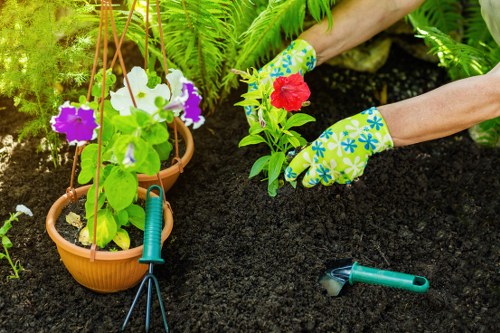
Garden maintenance in Barbican does not occur in isolation; it is strongly influenced by the character of nearby neighborhoods. The community lifts each other up, and local gardening clubs often share resources and advice. By understanding the local geography and the unique features of each area, homeowners create gardens that resonate with their surroundings.
For example, Clerkenwell offers a mix of historic charm and modern living, making it an ideal neighbor with gardens that emphasize vintage and sustainable practices. Moving a short distance, Holborn features urban spaces that prioritize innovative green solutions amid high-rise buildings. These communities offer a rich tapestry of style, inspiring Barbican homeowners with creative ideas for their own gardens.
Other nearby areas such as Finsbury, Spitalfields, and St. Paul’s enhance the local flavor with diverse gardening techniques and local flora. Even areas such as Islington and Covent Garden contribute to a shared wisdom on seasonal planting, pest management, and landscape design. This interconnected ecosystem supports a hands-on, community-based approach to garden maintenance in Barbican, where lessons learned in one area empower the innovations in another.
Additional Tips and Tricks for a Flourishing Barbican Garden
Fine-tuning garden maintenance in Barbican ultimately comes down to dedication, research, and a willingness to try new techniques. Invest in organic fertilizers and natural pesticides to keep your garden safe and healthy. Maintaining a compost pile can also reduce waste while creating nutrient-rich soil for your plants.
Consider setting up a calendar that outlines the best times to prune, water, and fertilize. This organized approach ensures that your garden is always in the best shape possible. Regular check-ups and timely responses to any signs of pests or disease can save your plants and maintain the overall vitality of your green space.
Community events, local gardening meetups, and online forums dedicated to Barbican gardens can also be great resources. These gatherings not only promote shared wisdom but also foster a sense of belonging and help spread the joy of nurturing nature in an urban environment. By linking traditional techniques with modern innovations, your garden will blossom into a masterpiece of eco-friendly art.
Understanding the Influence of Urban Environments on Garden Aesthetics
Urban spaces like Barbican present a unique set of challenges and opportunities in the realm of landscape maintenance. Buildings cast long shadows and urban pollutants can affect soil quality, yet these challenges also inspire creative, resilient gardening solutions. Homeowners often turn to vertical gardens, container plants, and raised beds to overcome space limitations while still cultivating a vibrant garden.
The incorporation of hardscape elements can also play a significant role. Stone paths, wooden pergolas, and decorative gravel not only add an artistic flair but also organize the garden space, creating cozy corners perfect for relaxation. This kind of design integrates well with the historic textures found in Barbican’s architecture, blending the old with the new.
Collaboration with local horticulturists can provide insights into native species that thrive in urban conditions. Such partnerships help in choosing plants that align well with the environment, optimizing water usage and reducing the need for synthetic fertilizers. The outcome is a sustainable, visually appealing garden that stands as a testament to the evolving art of garden maintenance in Barbican.
Seasonal Planting Strategies
Another important aspect to consider is seasonal planting. Transitioning your garden from one season to another requires careful planning. In spring, planting early bloomers can kick-start your garden with vibrant colors, while summer demands hardy plants that can withstand prolonged periods of sunlight. Fall is the time to harvest and prepare the garden for winter by adding compost and mulch, and during winter, strategic pruning sets the stage for a rejuvenated look in the coming year.
Emphasis on Sustainable Practices
Modern garden maintenance Barbican techniques are increasingly focused on sustainability. Local gardeners often use rainwater harvesting systems, organic pest control, and composting methods to minimize waste. These practices not only help create a healthier garden but also contribute to environmental conservation in urban settings. By adopting such eco-friendly solutions, you are actively participating in a broader movement towards a greener future.
Bringing It All Together: The Future of Garden Maintenance in Barbican
In summary, maintaining an outstanding garden in Barbican is a rewarding blend of art, science, and community effort. Whether you are a novice gardener or an experienced horticulturist, the principles of diligent care, timely maintenance, and sustainable practices are universal. Your garden stands as a living exhibit of personal creativity and community pride.
The beauty of Barbican gardens lies in their diversity and adaptability. Every plot tells its own story and contributes to an ever-changing mosaic of urban life. Embracing both time-honored methods and innovative technologies ensures that your garden remains vibrant, regardless of the season. Garden maintenance Barbican is an ongoing conversation between nature and the urban world—a conversation that gets richer with every season.
Looking forward, the future of gardening in Barbican is brimming with potential. Advances in sustainable gardening technologies, increasing community collaboration, and heightened environmental awareness promise to reshape urban landscapes. Gardeners are encouraged to experiment with new ideas while preserving the charm and history that define Barbican. With each new planting season, the community nurtures a living legacy, ensuring that garden spaces remain treasured sanctuaries for generations to come.
Frequently Asked Questions (FAQs)
- Q: What are the best seasonal practices for garden maintenance in Barbican?
A: The best practices include adjusting watering routines according to seasonal needs, using organic fertilizers in the spring, mulching in the fall, and performing timely pruning during winter to prepare for new growth in spring. - Q: Which tools are essential for maintaining a Barbican garden?
A: Basic tools such as quality pruners, spades, rakes, and hoses are essential. Additionally, modern gadgets like moisture sensors and smart watering systems can significantly enhance your garden care routine. - Q: How do I choose plants that suit the Barbican environment?
A: Selecting native species or those well-adapted to urban climates is crucial. Consult local gardening clubs or horticulturists for advice on the best plants to thrive in Barbican's soil and climate conditions. - Q: Can community collaboration help improve my garden?
A: Absolutely. Many Barbican residents share techniques, tools, and experiences, resulting in a nurturing environment that benefits everyone. Local meetups and online forums are great places to start. - Q: How does sustainable gardening factor into Barbican garden maintenance?
A: Sustainable practices such as rainwater harvesting, organic pest control, and composting help create eco-friendly gardens. These methods not only improve plant health but also promote a greener urban environment.

